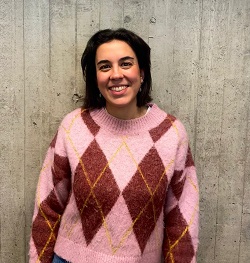Lymph node model to investigate unwanted antibody reactions
NewsAntibodies protect us against pathogenic microorganisms. However, our immune system sometimes produces unwanted antibodies, as seen in autoimmune diseases, blood transfusions, and reactions to biological medicines. PhD candidate Laura Fernandez is investigating the mechanisms behind this unwanted antibody production, aiming to identify potential therapeutic targets.
 B cells, originating in the bone marrow, produce antibodies. Upon encountering a foreign substance, these cells develop into antibody-producing factories. While this is desirable after vaccination, it is detrimental in unwanted immune reactions. Laura gained valuable insights into B cell development during the COVID-19 pandemic, analyzing blood samples collected at fixed intervals post-vaccination through collaborative research by Sanquin, Amsterdam UMC, and Reade. However, in vitro studies are essential for a deeper understanding of B cell development.
B cells, originating in the bone marrow, produce antibodies. Upon encountering a foreign substance, these cells develop into antibody-producing factories. While this is desirable after vaccination, it is detrimental in unwanted immune reactions. Laura gained valuable insights into B cell development during the COVID-19 pandemic, analyzing blood samples collected at fixed intervals post-vaccination through collaborative research by Sanquin, Amsterdam UMC, and Reade. However, in vitro studies are essential for a deeper understanding of B cell development.
A subsidy from the Sanquin Research Fund enables Laura to evaluate optimal in vitro models. Traditionally, B cells are cultured in two-dimensional (2-D) dishes. Laura is now comparing this method with a three-dimensional (3-D) lymph node model, which provides a more natural environment. In this model, B cells are cultured within a gel alongside T cells and supporting cells, replicating the natural composition of lymph nodes, the body’s immune cell storage sites. Supporting cells are obtained from tonsils provided by a hospital, while immune cells are isolated from the blood of donors. In both models, Laura analyzes the surface characteristics and internal molecular processes of B cells
